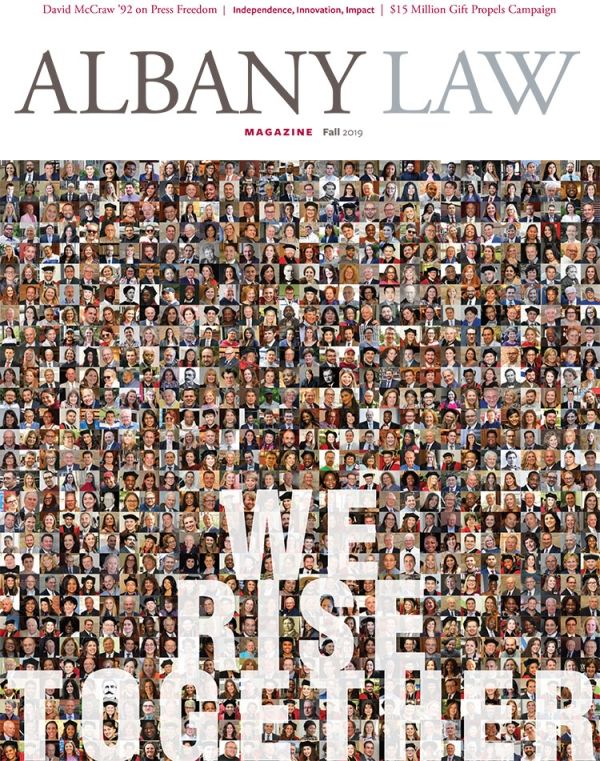Sundquist Provides Direction to Ambiguous SCOTUS Ruling

In Peña-Rodriguez v. Colorado (2017), the U.S. Supreme Court for the first time recognized a racial bias exception to the no-impeachment rule, allowing post-verdict challenges based on juror prejudice. Yet applying that new rule—which subordinates the secrecy of jury deliberations to the Sixth Amendment guarantee of an impartial jury and the Fourteenth Amendment promise of equal protection—has proven to be an easier-said-than-done proposition.
Professor Christian B. Sundquist, director of faculty research and scholarship at Albany Law School, postulates a working paradigm in an article published recently in the Denver Law Review, “Uncovering Juror Racial Bias.” Sundquist said the article was inspired by his own class when he asked students to analyze and apply the ruling as would a judge.
“I asked my students, ‘If you were the judge, how would you apply Peña-Rodriguez?’ My students are amazing and tried to tackle it in an analytical way, but the language of the decision is fairly ambiguous.”
Sundquist quickly realized the difficulty his students faced is identical to the difficulty judges are having in applying the new standard. Justice Anthony Kennedy’s majority opinion offered little guidance, and thus far there is scant decisional or scholarly direction for trial judges on not only how to identify juror racial bias post-verdict, but how and when to address it. The professor said many judges simply lack the training, knowledge, or experience to fully appreciate when racial stereotypes are infecting jury deliberations. He suggests courts look to sound sociological and psychological research in considering post-verdict motions under Peña-Rodriguez, and conduct thorough fact-finding hearings when presented with claims of juror racial bias.
“For me it is astounding that for our country’s entire history, until just a couple of years ago, judges had almost no freedom to even examine evidence of juror racial bias in a post-verdict impeachment context,” Sundquist said. “It is a wonderful development, but nonetheless has it flaws.”
Peña-Rodriguez arose out of Colorado, where the defendant was accused of molesting two teenage girls in a restroom. The jury found the defendant guilty of unlawful sexual contact and harassment, but after the panel was discharged, two jurors signed affidavits attesting to the racial bias of juror H.C., who allegedly said—among other racist remarks—that “nine times out of 10 Mexican men were guilty of being aggressive toward women and young girls.”
Under the no-impeachment rule, juror testimony about what occurred during deliberations may not be used to impeach a verdict. But in 2017, a 5-3 Supreme Court majority held that the no-impeachment rule must give way to the right to an impartial jury, as well as the equal protection guarantee, upon evidence that a juror issued a “clear statement of racial bias” that amounted to a “significant motivating factor” in the juror’s decision. Trial courts have struggled to figure out what exactly constitutes a “clear statement of racial bias” and when that statement evinces a “significant motivating factor.”
Sundquist discusses both the psychology and sociology of racism within the pertinent legal constructs and concludes that a first step is educating and training judges in the hope that they can prevent racial bias from polluting the jury deliberation process in the first place. And when they are confronted with a Peña-Rodriguez allegation, Sundquist argues in his article, judges must hold “a thorough and informed evidentiary hearing, considering not only juror testimony but also scientific and specialized evidence on the nature of racism and stereotyping.”
The professor said the Albany Law School pedagogical modality inspires exactly the sort of teaching-scholarship experience that resulted in his article.
“One thing I have found that makes our faculty special is our devotion to both teaching and scholarship to better serve the needs of our students and the broader community,” Sundquist said. “For the majority of law schools, the tradition has been to value scholarship more than teaching or even public service. I find our scholarship informs our teaching, and our teaching informs our scholarship.”
PRINT ISSUE
Click for downloadable PDF

